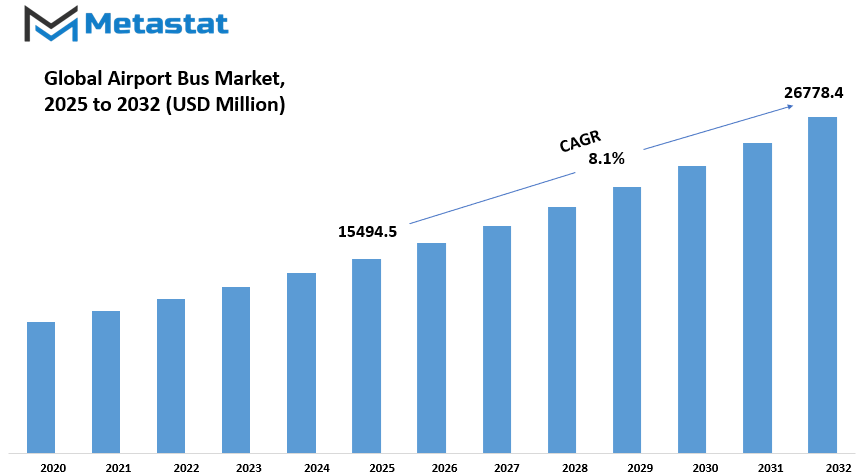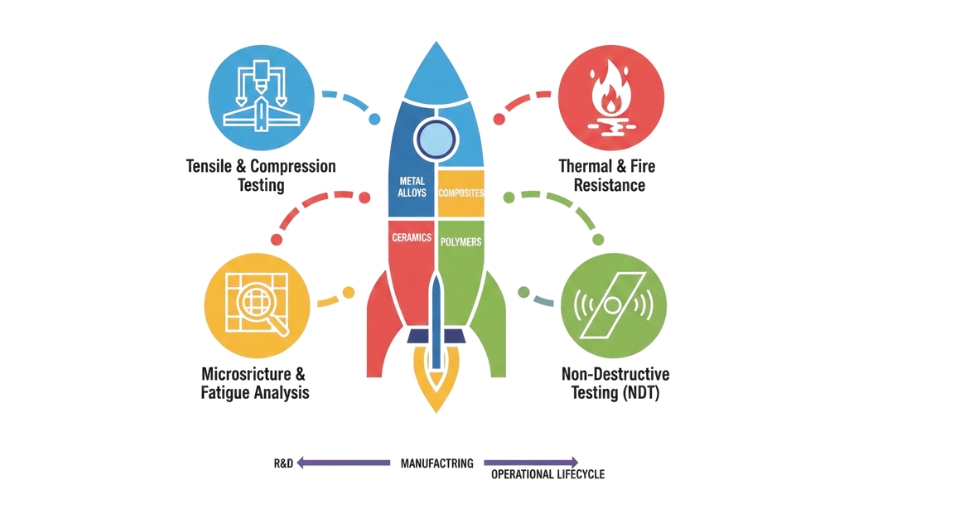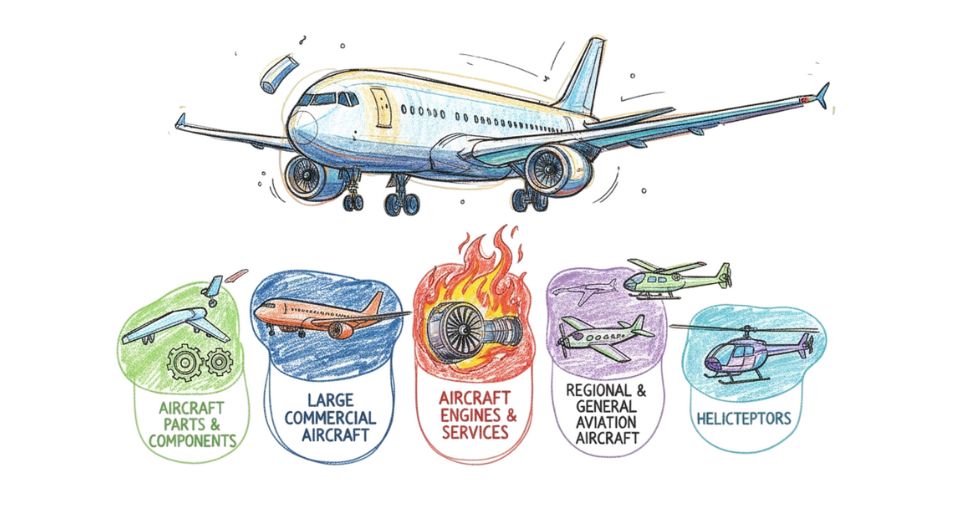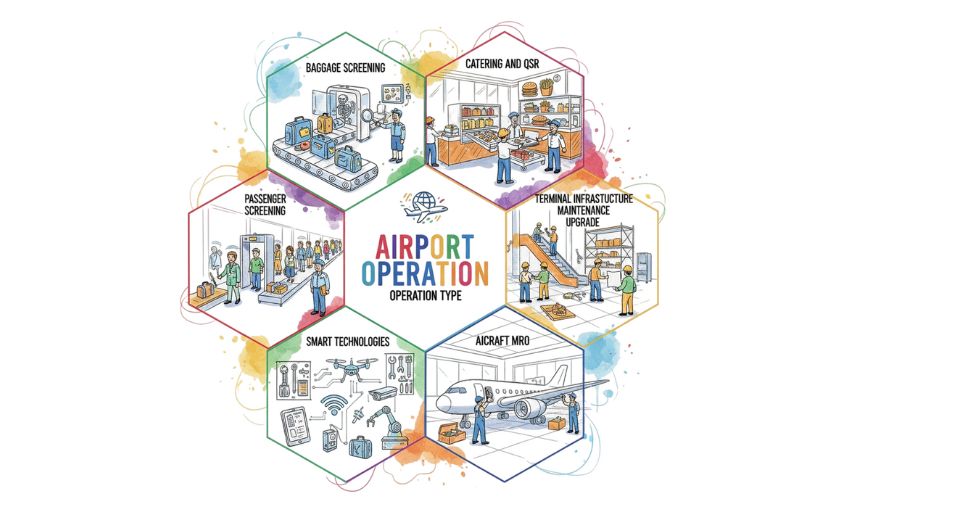MARKET OVERVIEW
The Global Airport Bus market will keep on changing as transport becomes important for air travel. Over the years, airport buses have gained significance not only as a mode of transport for transferring passengers from the airport to key destinations. The airport bus industry is expected to change with technology in view of the growing expansion of airports and demands for efficient and cheap transport systems, performance comfort, and operational flexibility.
The market will see increasing integration with smart city infrastructure solutions to provide effortless connectivity between the airport and the urban centers. Smart ticketing, real-time tracking, and mobile app systems will all become standard features, thereby streamlining and enhancing the user-friendliness of the airport bus journey further. Through enabling more straightforward planning, passengers will be kept well-informed on bus scheduling, availability, and routing; timely, accurate information will be passed on to travelers. As digital tools grow into the mainstream, service convenience will become a significant contributor to drawing in a greater variety of travelers.
Environmental sustainability will also emerge as a central theme for the Global Airport Bus market. With increasing pressure on the transportation industry to reduce its carbon footprint, electric and hybrid buses will likely dominate the landscape. These eco-friendly vehicles will not only curb emissions but also act as a marketing tool for airports, positioning them as environmentally aware. Hence, airports would be encouraged to follow cleaner transport modes in support of global sustainability causes. The impending change toward green transport will also stir collaborations between the public and private sectors, quite likely bringing about changes in market dynamics.
The Global Airport Bus market will witness increasing demand for customization-oriented services. As the travel industry keeps on diversifying and global interconnectivity keeps on expanding, so shall airport buses strive to embrace different passenger preferences. From luxury buses offering superior service to economy service with adequate comfort, we expect a great divergence to occur in the market service basket. Airport bus services will become increasingly influenced by demographic changes, whereas some of the younger travelers will become attracted to modern and convenient modes of transport, while older passengers will continue prioritizing comfort and accessibility.
Passenger safety will also be an important part of the Global Airport Bus market's future. Focused more on public safety, the industry shall see more and more advanced security implementations like surveillance systems, onboard staff, and health protocols to ensure passengers' safety in the wake of the COVID-19 pandemic. The focus on the passenger wellbeing shall encompass more than just safety considerations; it shall cover the whole travel experience to make sure that the passengers' felt safe and relaxed throughout their journey.
Increasing complexity in airport operations and the need to accommodate rising traveler numbers would be a big push towards efficiency in the Global Airport Bus market. Trends for the future may involve automated buses that further remove human involvement from operating these services. We may expect the application of the same AI and machine learning technologies to optimize routes, predict passenger demand, and ensure buses are in operation, all in alignment with real-time data. The automation thereby adopted will go a long way in reducing operational costs for the industry and improving the overall experience for the traveler.
In conclusion, with the coming of various technological advances posing challenges to the market, the market will undergo a tremendous transformation under the push of sustainability goals and consumer demands; eventually, it will grow into one that is thoroughly interconnected, efficient, and responsive to the needs of the present-day traveler.
Global Airport Bus market is estimated to reach $26778.4 Million by 2032; growing at a CAGR of 8.1% from 2025 to 2032.

GROWTH FACTORS
Steadily on the rise, the airport bus industry is being spurred on by ever-increasing demand for efficient and cost-effective transport solutions at the airports. With booming growth in air travel, effective means to transport passengers to and from airports is called for. Airport buses fit the bill, providing an economical means of moving large volumes of passengers at any one time. This demand is great, especially in airports hosting heavy foot traffic and limited access to other means of transport.
Another major driver of the airport bus market is the ever-developing airport infrastructure and an increase in air travel across the globe. New and expanded airports are being properly built, since an increasing quantum of passengers simultaneously demand strong and reliable transport options. The growth of international and domestic flights creates more demand for connectivity and efficient passenger movement, which puts airport buses as an important piece of transport infrastructure.
Nonetheless, there are challenges to be surmounted. Key restraint includes high operational costs and budget limitations facing airport authorities. Other expenses involved in running bus operations, especially in a large scale, are the maintenance, fuel, and remuneration of drivers beside other staff, which could put pressure on airport management budgets. Further, many of the airports, especially the smaller ones, do not have adequate financial resources to invest in the infrastructure that would be needed for the long-term support and sustainable running of the bus services.
Regulatory constraints and, also, as a result, draw-out implementation of public transportation programs could pose extra snags for the market. Governments and regulators might impose complex regulations that can slow or stifle development of new bus services, impairing the ability of airport authorities to respond to pressing demand for transport services especially in areas where public transport systems are weak.
Conversely, the airport bus market has significant untapped opportunity. Electric buses are coming into the picture more and more as a suitable alternative against the traditional fossil fuel-powered ones. As operating in a sustainability manner started to take center stage at tunnels' constructs or renovations, airports are starting to evaluate their carbon footprints in an attempt to bring them down, electric buses receive what appears to be a proper step in that prospective.
Technological improvements are presenting other opportunities for passenger convenience and route optimization. Technology has enabled buses to provide real-time tracking, smart ticketing, and rapid boarding, as other innovations increase passenger experience and help airport authorities with operational efficiency to make bus transport more appealing to traveling public.
Overall, demand for affordable and fast transport solution for passengers would spur its growth along with expanding airports and technology. Sustaining the growth would, however, relate to other challenges, operation costs, and regulatory issues that would need to be handled.
MARKET SEGMENTATION
By Type
The global airport bus market is emerging as a sector of striking growth in the transportation sector, rendering requisite services for travelers. In this market, buses are classified under different types based on the energy sources used for driving them. These may include electric buses or fuel-powered buses, with each making a special contribution to the sector.
Electric buses in the airport transportation market are a spectacular segment, valued up to $4,586.3 million. Basically, these buses are steadily driving progress with the market die to their eco-friendly operations and increasing demand for sustainable standards of transport. With increasing acceptance in various sectors, electric airport buses offer an alternative to petrol or diesel-powered buses that is cleaner and quieter.
It is becoming greener in assisting carbon footprint reduction of airports, which is an essential avenue of the modern transportation strategies. The venture into electric buses is much likely to be driven by environmental concerns and technological advancement that makes them more efficient and cost-effective.
On the other hand, fuel-powered buses are a significant segment of the airport bus market. Diesel buses, gasoline buses, or those running on more traditional fuels have been one of the crucial pinch hitters in airport transportation worldwide. However, after much advancement, electric buses are still fighting a losing battle with fuel buses in all parts of the world due to the existing infrastructure base, much longer endurance, and lower initial costs of production. They ferry passengers from terminal to terminal, park to park, and to public transport hubs, ensuring reliability and convenience.
The division of the airport bus market into electric and fuel types indicates the available spectrum of solutions to satisfy the varying airport and passenger needs. Whereas electric buses certainly mean sustainability and innovation, their fossil-fuel-powered counterparts are still very much a redundancy in airport transportation by virtue of reliability and familiarity. Both bus type markets are bound to grow in the nearing years, with more airports using a mix of electric and fuel buses to satisfy the varying requirements of air travelers.
Airport bus market from a global perspective, including electric and fuel-driven city buses, is a very critical sub-sector of the transport sector. As the market matures, technology changes, green initiatives, and an incessantly growing demand for efficient and reliable passenger transport solutions directly shape the sector's projects in sustainability and efficiency.
By Sales Channel
The steady growth has been seen in the global airport bus market because of the increased requirement for transportation solutions at airports. This market can also be categorized by the sales channels through which airport buses are sold. The two main sales channels in this area are direct sales and distributor sales.
Infrastructure buses are direct sales buses, selling by manufacturers to airports or to organizations responsible for movement at airports. It is a direct relationship where buyers can negotiate their prices, terms, and specifications with the manufacturers and a more customized purchasing experience where the authorities can work together with the manufacturers towards selecting those buses that would be ideal meeting their needs for airport operations. Such a direct relation offers more excellent after-sales support and maintenance services, which are critical to ensure the buses remain fit and efficient in demanding environments.
Distributor sales are those in which another company works as an intermediary between bus manufacturers and airport authorities. This kind of distributor would usually have established relationship with various manufacturers so that he/she could give variety of buses to potential buyers. Distributors play an important role from those markets that airport authorities want no dealings with manufacturers in direct sense.
Airport authorities prefer such distributors for their options, logistics aspects, and after sale services. This sales channel could be much beneficial for the buyers who want to compare various brands and models before making their decision. Distributors usually have well-constructed networks and can make faster deliveries and access to a wider selection of buses which can be important for airports with time-sensitive needs.
Both direct sales and distributor sales are important for the airport bus market as each of them has its specific advantage that can work best for the buyer's interests and particular requirements of the airport. Direct sales promise more personalized transaction and possibly better after-sales services while distributor sales suggest greater flexibility and product variety.
The duality of the continued rise demand for efficient airport transportation services would ensure the growth and development of both sales channels as they evolve toward servicing the customer needs of the global market for airport buses. Both methods are significant in assuring that an airport authority can procure those buses which best meet its operational requirements.
By Application
Global Airport Bus demand is growing steadily and continuously owing to several reasons. Since global travel is steadily increasing, so is the demand for airport buses due to their convenience and cost advantages. Airport buses are a crucial transport means for passengers entering or leaving the airport, becoming an immensely significant part of airport transport systems.
The Global Airport Bus market can broadly bifurcate its applications under Domestic Airport and International Airport, both defined by the characteristics of travel offered which meet different travel needs.
Domestic airports are those chartered by passengers on travel within the given country's borders. The domestic airports host a larger number of short, medium, and some long-distance flights that connect people across different cities throughout the country. Airport bus service for a domestic airport is famous for working as a link between passengers at the terminals and various parts of the city. Since domestic travel is more frequent, and at times, these buses are a more economical option for transportation, many people use airport buses to get quickly and comfortably to their destinations.
In contrast, international airports cater to international travel, connecting travelers with destinations around the world. Given the sheer terminus of international flights and with regard to their distance from the city center, international airport buses play a crucial role in assisting and conveying travelers coming from or going to their home countries. Airport buses generally offer services that handle the high demand created by long-haul flights and international travelers who require reliable and comfortable transportation.
The airport bus market is driven by the volume of travelers and the need for reliable, economical transportation. More flights mean more need for the buses-from domestic to international routes-that are able to carry this volume and also do so efficiently for the passengers. As more people use airports as nodes for entering different regions, the airport bus sector will continue to grow and change in order to cope with the rising transportation demand, becoming more and more critical with regard to enabling smooth airport functioning.
Consequently, the Global Airport Bus sector, extending to Domestic and International Airport segments, will always have prospects for demand in the wake of increasing travel with the need for stronger and trustworthy transportation solutions for passengers.
|
Forecast Period |
2025-2032 |
|
Market Size in 2025 |
$15,494.5 million |
|
Market Size by 2032 |
$26,778.4 Million |
|
Growth Rate from 2024 to 2031 |
8.1% |
|
Base Year |
2024 |
|
Regions Covered |
North America, Europe, Asia-Pacific, South America, Middle East & Africa |
REGIONAL ANALYSIS
The global airport bus market is segmented on the basis of geographical regions: North America, Europe, Asia Pacific, South America, and the Middle East & Africa. Within North America, there are further subdivisions of the markets into those of the U.S., Canada. and Mexico, which have different airport bus service demands and infrastructures. Europe covers all those major players from the UK, Germany, France, Italy, etc. and these countries in turn portray differing needs in terms of airport transportation solutions.
Asia Pacific being one of the largest and rapidly growing markets, is dominated here by countries such as India, China, Japan, and South Korea, while demand for airport bus services is growing in other parts of Asia Pacific. The sudden growth in air travel in this region has created a larger demand for efficient and affordable transport solutions to and from the airport.
In South America, which is also an emerging market, major countries like Brazil and Argentina are showing considerable demands for airport bus services. This region has witnessed other countries in South America increasing the bus service availability to the airport, thus creating new opportunities.
The Middle East & Africa are of concern too, where the region is further boosted by the development of airport bus services by countries such as those of the GCC, Egypt, and South Africa. These destinations have been characterized by growing tourism and business travel that create demand for transportation modes including airport buses. Other areas in the Middle East & Africa still continue to have an increasing need for an effective airport transport system creating more growth potential for the airport economy in these regions.
Each region matters significantly to the global airport bus market, with various factors such as population size, extent of existing air traffic, tourism rate, and rate of infrastructure development playing their respective roles in stimulating bus service demand. Herein, the airport bus market is set for development as the need grows stronger in each of these regions for efficient, environmentally friendly, and cheap transportation to and from airports, catering to the specific demands of every region. What will further shape the global market is the ever-growing change created in the field of infrastructure, urbanization, and the travel industry in general.

COMPETITIVE PLAYERS
The increased demand for smooth and sustainable transportation at airports worldwide is driving the steady growth of the global airport bus market. The charter key players of the airport bus industry would be AB Volvo, BYD Motors Inc., COBUS Industries GmbH, Xinfa Airport Equipment Ltd., Mallaghan, Solaris Bus & Coach sp z oo, BMC Otomotiv Sanayi ve Ticaret A.S., Yutong Bus Co. Ltd., TAM-Europe, Azad Coach, Xiamen King Long International Trading Co.Ltd., Isuzu Motors Ltd., and MAN Truck &Bus SE. These companies make and develop the types of buses that fit airport requirements for transporting passengers, staff, and luggage between aircraft and terminals.
AB Volvo has made a name for itself as an environmentally friendly and effective airport bus producer. Its focus on innovation and sustainability has helped it remain a strong player in the airport bus segment. And thus BYD Motors Inc. will be the other giant in electric vehicles making a mark in the industry with its electric airport buses. These buses are energy-efficient, reduce emissions, and are increasingly becoming a favorite for airports seeking to enhance efforts at sustainability.
COBUS Industries GmbH produces airport buses with very high efficiency, tailored to the special needs of airport operation. The buses are strong, reliable, and built for moving large loads of passengers with great efficiency. Similar to these companies, Solaris Bus & Coach sp z oo and Yutong Bus Co., Ltd. manufacture technologically advanced bus designs that can be trusted for passenger transport services, often complemented by modern features intended for enhancing the overall passenger experience.
The airport bus market has been under siege by Xiamen King Long International Trading Co., Ltd., which claims a great chunk of that business in more demanding areas, particularly for those who demand cheap but reliable buses. Other companies like MAN Truck & Bus SE, Isuzu Motors Ltd., and TAM-Europe Ltd. have continued to supply high-quality buses to the various airport authorities focusing on safety and comfort. Hence, the diverse competitors in this industry will create even more growth stimulation in the airport bus industry toward innovation, sustainability, and operational efficiency.
Airport Bus Market Key Segments:
By Type
- Electric
- Fuel
By Sales Channel
- Direct Sales
- Distributor
By Application
- Domestic Airport
- International Airport
Key Global Airport Bus Industry Players
- AB Volvo
- BYD Motors Inc.
- COBUS Industries GmbH
- Xinfa Airport Equipment Ltd.
- Mallaghan
- Solaris Bus & Coach sp z oo
- BMC Otomotiv Sanayi ve Ticaret A.Ş.
- Yutong Bus Co., Ltd.
- TAM-Europe Ltd
- Azad Coach
- Xiamen King Long International Trading Co.,Ltd.
- Isuzu Motors Ltd.
- MAN Truck & Bus SE
WHAT REPORT PROVIDES
- Full in-depth analysis of the parent Industry
- Important changes in market and its dynamics
- Segmentation details of the market
- Former, on-going, and projected market analysis in terms of volume and value
- Assessment of niche industry developments
- Market share analysis
- Key strategies of major players
- Emerging segments and regional growth potential








 US: +1 3023308252
US: +1 3023308252






